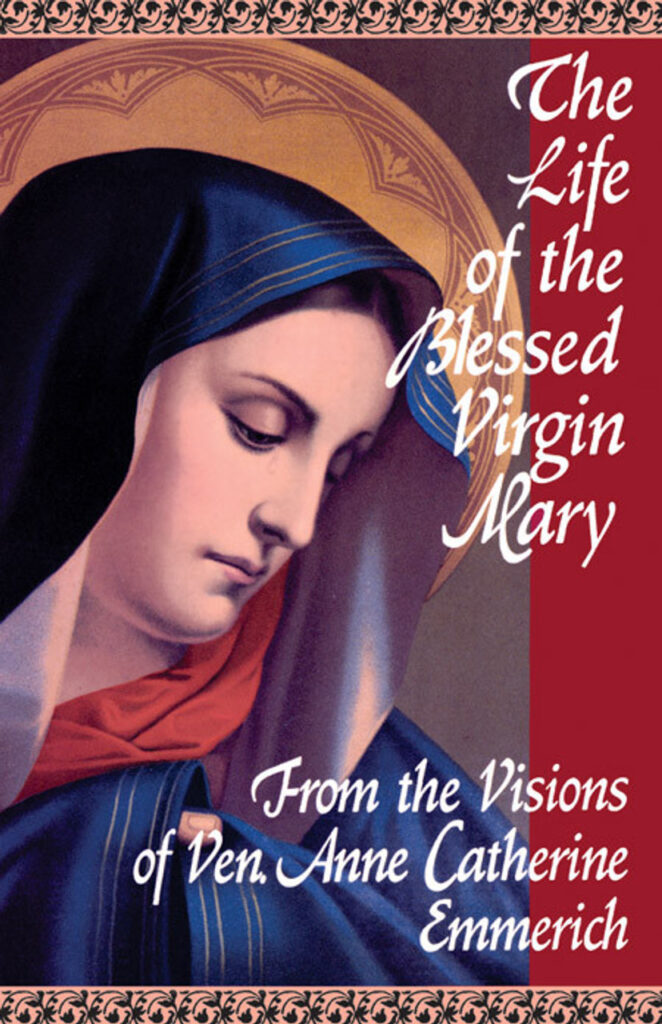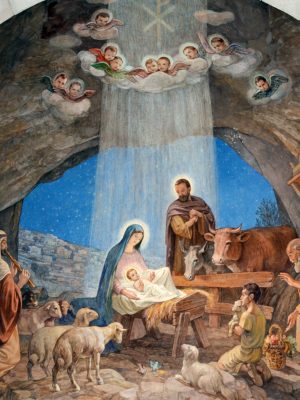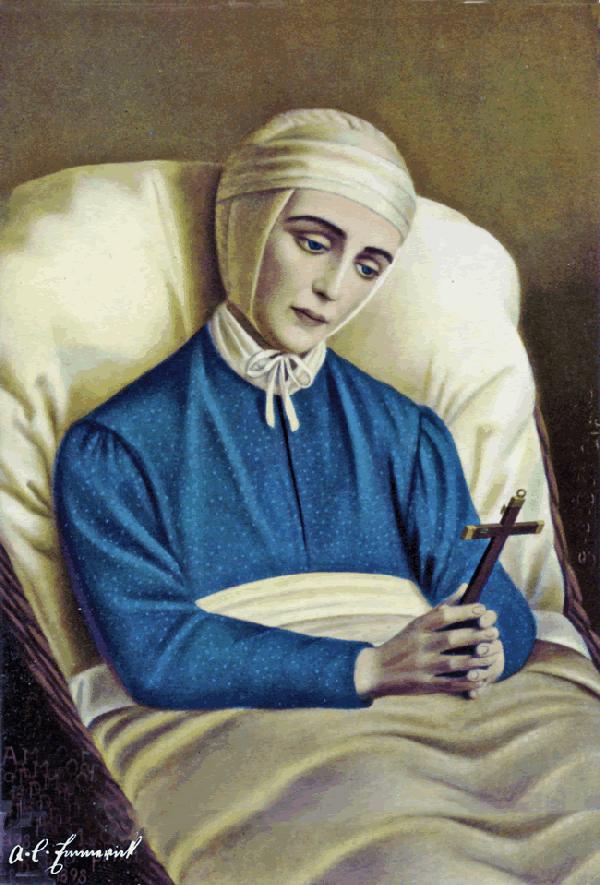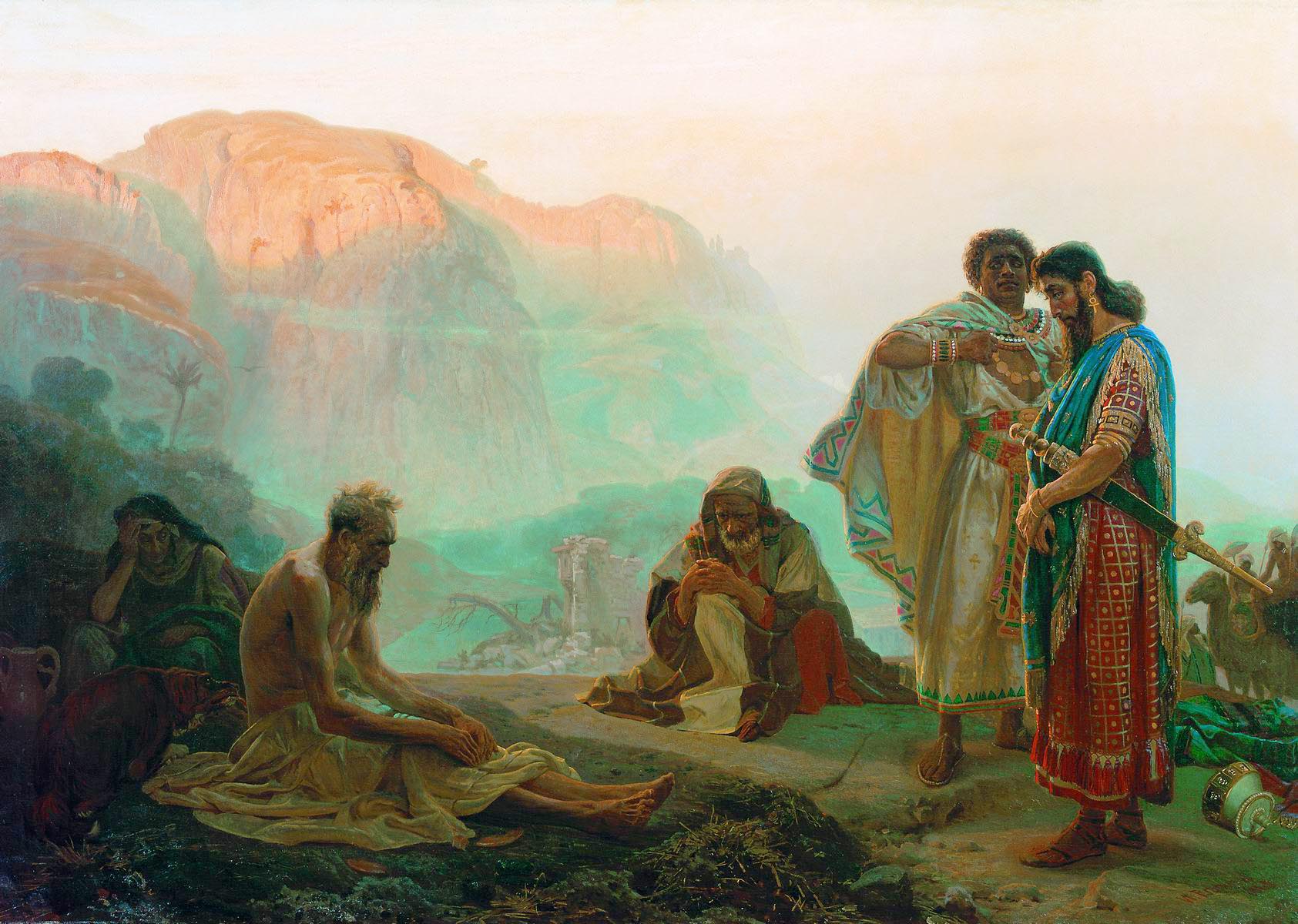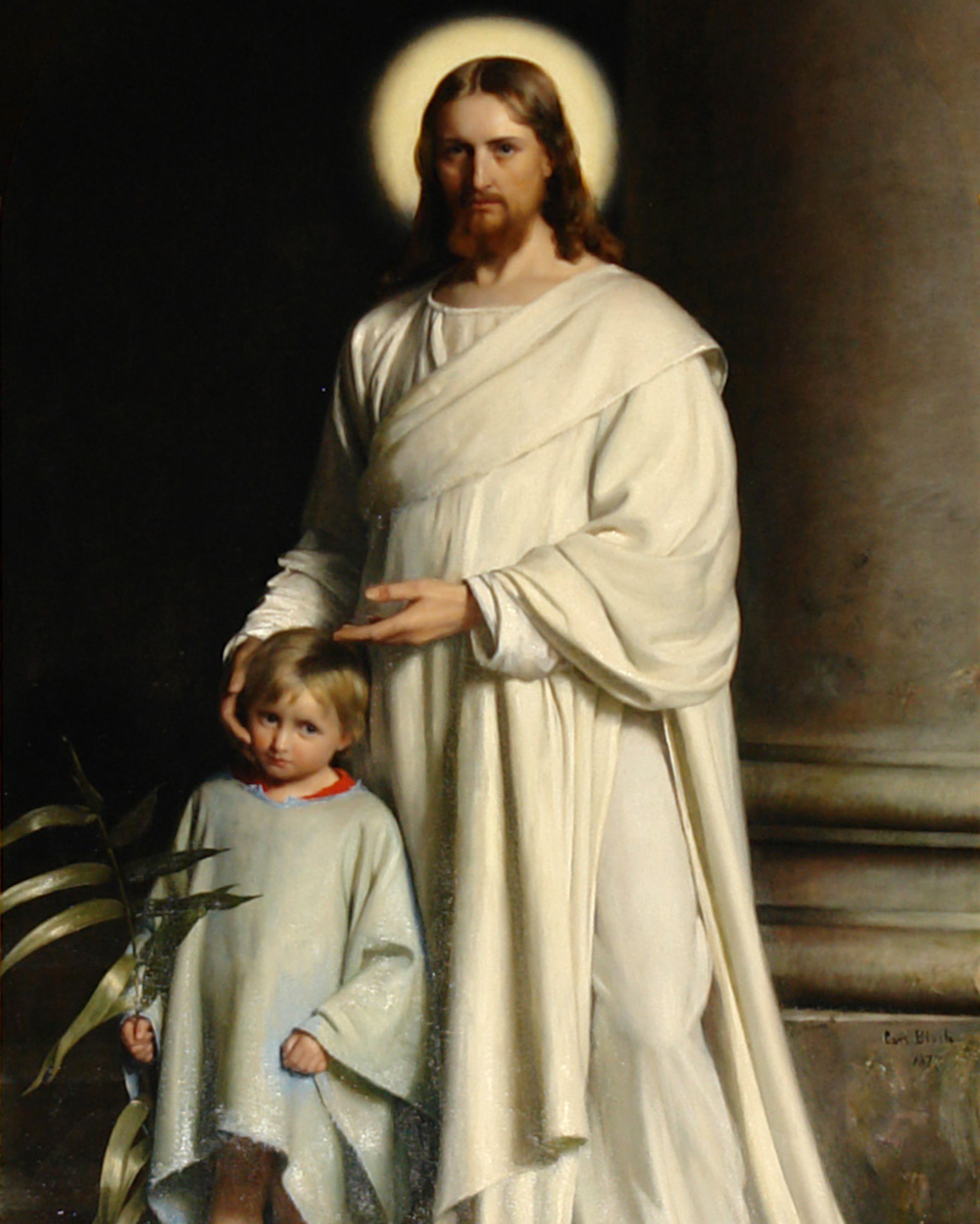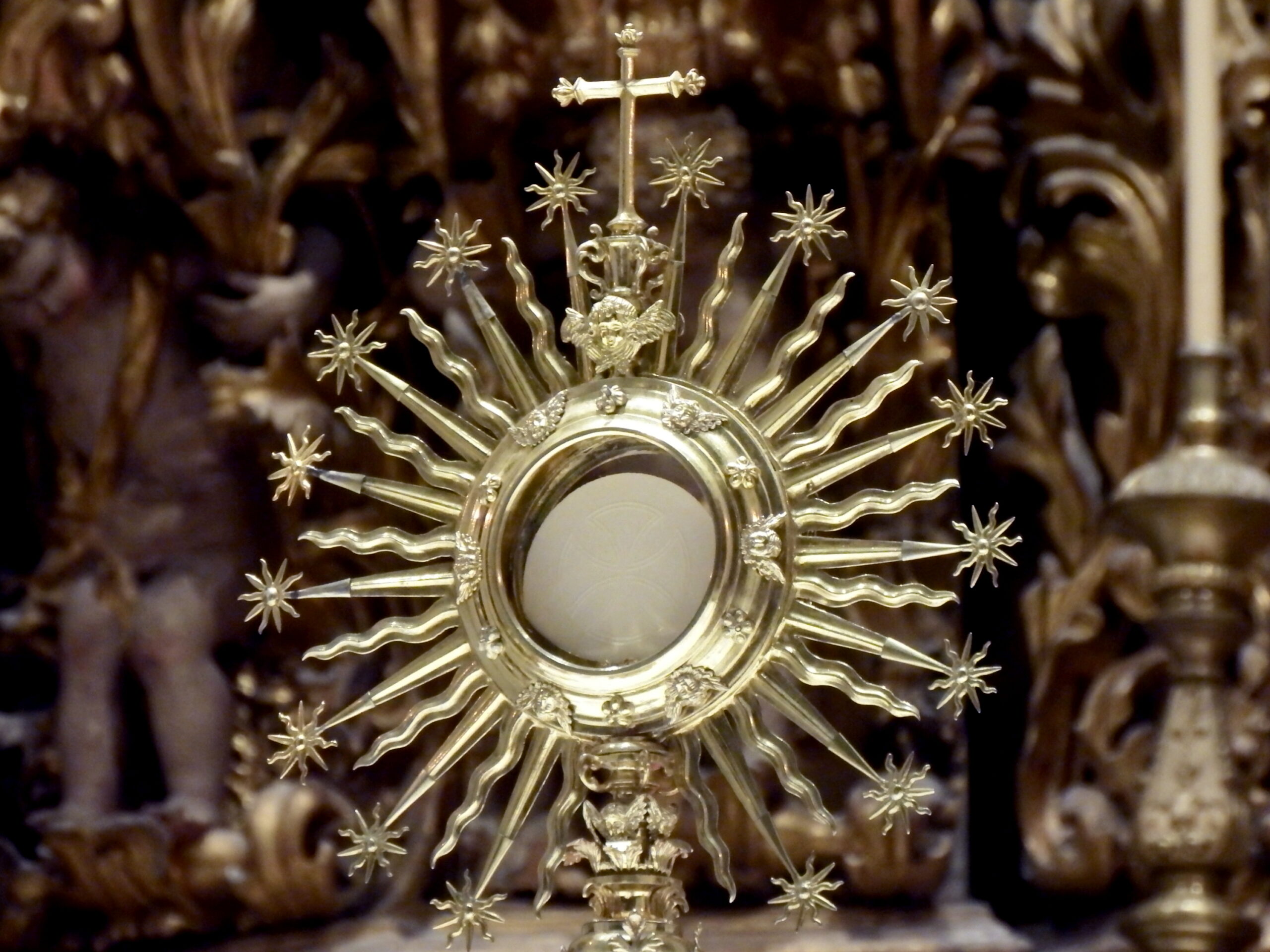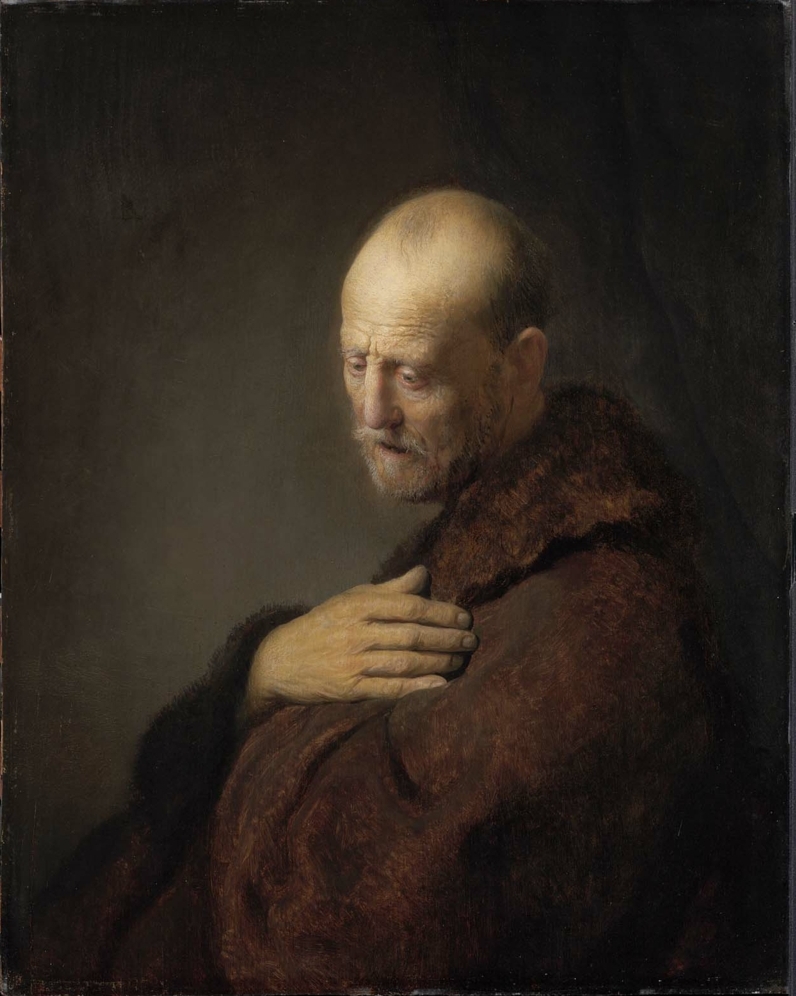The Blessed Virgin was in the eastern part of this cave, exactly opposite the entrance, when she gave birth to the Light of the World. The crib in which the child Jesus was laid stood on the west side of the southern and more roomy part of the cave. This crib was a hollowed-out stone trough lying on the ground and used for cattle to drink from; over it stood a longish rectangular manger or rack, narrower below and broader above, made of wooden lattice-work and raised on four feet so that the beasts could comfortably eat the hay or grass in the rack and lower their heads to drink the water in the trough beneath.
When the three holy kings presented their gifts, the Blessed Virgin was sitting with the child Jesus opposite the crib on the eastern side of this part of the cave. If you go from the place where the crib is out of the cave in a westerly direction into the so-called neck of the cave, you come first of all, following the southern wall, to the southern entrance mentioned above and later opened by Joseph, and then arrive at St. Joseph’s own room, which he later partitioned off on the south side by wicker screens in this passage. On this side there was a hollow in the wall where he put away all kinds of things.
The road to the Shepherds’ Valley ran past the south side of the cave. Here and there were little houses standing on hills, and scattered about in the fields were sheds thatched with reeds on four, six, or eight posts, with wicker walls. Towards the east of the cave the ground fell into a closed valley shut off on the north side and about a quarter of an hour’s journey wide. Its slopes were covered with bushes, trees, and gardens. If one walked through the tall luxuriant grass in the meadow, watered by a spring, and through the trees planted in rows, one came to the eastern ridge of this valley.
By following this very pleasant path in a south-easterly direction from the Cave of the Nativity, one came to a projecting spur of the ridge containing the rock-tomb of Maraha, the nurse of Abraham, which was called the Milk Cave or the Sucklings’ Cave. The Blessed Virgin came here several times with the child Jesus. Above this cave was a great tree with seats in it, and from here one had a much better view of Bethlehem than from the Cave of the Nativity.
I was told much that had happened in the Cave of the Nativity of symbolical and prophetical significance in Old Testament times, but can only remember that Seth, the child of promise, was here conceived and born by Eve after a seven years’ penance. She was told here by an angel that this seed was given by God in place of Abel. Seth was hidden and suckled by his mother in this cave and in Maraha’s cave, for his brothers were hostile to him just as Jacob’s sons were to Joseph.
In these caves, inhabited by men in earlier times, I have often seen places hollowed out by them in the rock in which they and their children could sleep in comfort on skins or grass. So perhaps the hollow in the stone bench beneath the crib may have been a sleeping-place of Seth’s or of a later inmate. But I cannot say this for certain now.
I also remember from my visions of the ministry of Jesus that the Lord on October 6th, after His Baptism, was keeping the Sabbath in the Cave of the Nativity, which had been made into a place of prayer by the shepherds; and that He told the shepherds that His Heavenly Father had appointed this as the place of His Birth as soon as Mary had conceived.
This article is taken from a chapter in The Life of the Blessed Virgin Mary by Blessed Anne Catherine Emmerich which is available from TAN Books.
